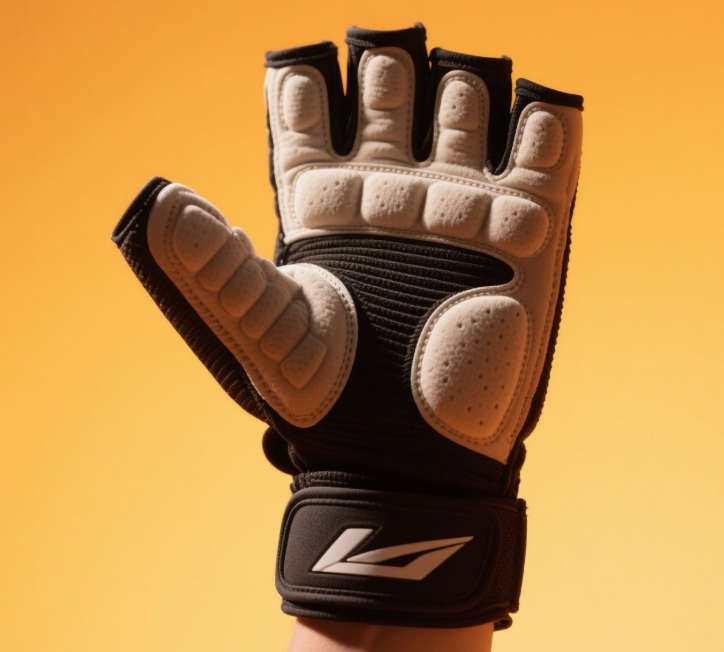May 16-2025
Why Wear Fingerless Fitness Gloves?
When sourcing the best workout gloves to prevent calluses, material composition dictates durability and comfort. Thick yet flexible leather—such as goatskin or synthetic microfiber—distributes pressure evenly, minimizing friction. There being various options, reinforced palms are non-negotiable, preventing tears while absorbing sweat. Though some suppliers prioritize cost-cutting fabrics, premium gloves blend durability with breathability. Were manufacturers to compromise on quality, premature wear would result in customer complaints. Seamless stitching around high-stress zones (knuckles and thumb webbing) further shields against abrasion. Silicone grip patterns also help, enhancing traction without thickening the material excessively. Consequently, B2B buyers must scrutinize material specs before bulk ordering.
Strategic padding placement separates functional gloves from inadequate ones. Padding concentrated around the metacarpal bones—not uniformly spread—absorbs shock where calluses form most. Even if a glove has ample cushioning, poor distribution forces hands to compensate, causing blisters. There are key zones needing extra foam or gel layers: the palm’s center and the base of fingers. Should manufacturers overlook these areas, users would still develop calluses despite wearing gloves. High-density foam maintains structure over time, unlike cheap padding that flattens after weeks of use. Buyers testing samples must assess longevity—repeated compression should not degrade the padding. Thus, ergonomic design is as crucial as material quality.

Beyond friction prevention, ideal fitness workout gloves optimize grip—whether lifting, rowing, or using barbells. The table below outlines critical grip-enhancing elements:
| Feature | Purpose | Material Example |
|---|---|---|
| Silicone print | Prevents slipping on bars/dumbbells | Laser-cut palm coating |
| Perforated zones | Enhances breathability without sacrificing hold | Micro-perforated leather |
| Flex grooves | Allows natural hand movement while maintaining firm grip | Stretchable spandex panels |
| Anti-slip stitching | Reinforces seams in high-wear areas | Dual-thread polyester |
Were a glove to lack these, sweaty palms would slip, increasing callus risk. Thus, grip innovation ensures both safety and performance.
A glove’s lifespan depends on its seams—flimsy threads invite blowouts. Double or triple stitching at stress points prevents unraveling during heavy lifts. There being different techniques, flatlock stitching reduces inner-seam abrasion against skin. Though some suppliers use single-thread construction, this fails under repetitive tension. Should gloves fray prematurely, buyers face inventory write-offs and returns. Bar-tacked seams at thumb joints—a frequent tear zone—extend durability exponentially. B2B purchasers must, therefore, inspect seam density before approving bulk orders. Only structurally sound gloves justify long-term supplier partnerships.
Excessive sweat escalates friction, accelerating callus formation. Mesh panels or perforated leather, strategically placed, enhance airflow without weakening structure. There are compromises—full leather gloves offer durability but trap heat, whereas ultra-breathable fabrics may lack support. Were manufacturers to ignore moisture-wicking liners, gloves would become unusable in high-rep workouts. Antimicrobial treatments also matter, preventing odor buildup from bacterial growth. Buyers evaluating samples should test breathability in real-use conditions, not just rely on spec sheets. Breathable designs, consequently, improve both comfort and hygienic appeal.
Callus prevention relies not just on palm protection but wrist stabilization. Adjustable straps—hook-and-loop or buckle-based—ensure a snug fit, reducing hand slippage inside the glove. Loosely fitted gloves, though easier to mass-produce, cause internal rubbing, worsening calluses. There being diverse wrist wrap designs, buyers must prioritize flexibility: overly rigid straps restrict movement, while flimsy ones fail to lock the wrist. Should a supplier ignore ergonomic wrist alignment, workouts like deadlifts or kettlebell swings would strain tendons. Elasticated cuffs with silicone grippers, however, stay put without cutting circulation. Thus, wrist engineering completes the callus-prevention equation.

Specialize in different kinds of gloves /clothing and outdoor activities products.
14 years experience with gloves development.
Business with many clients from Europe and also many different countries all over the world .
NEXT